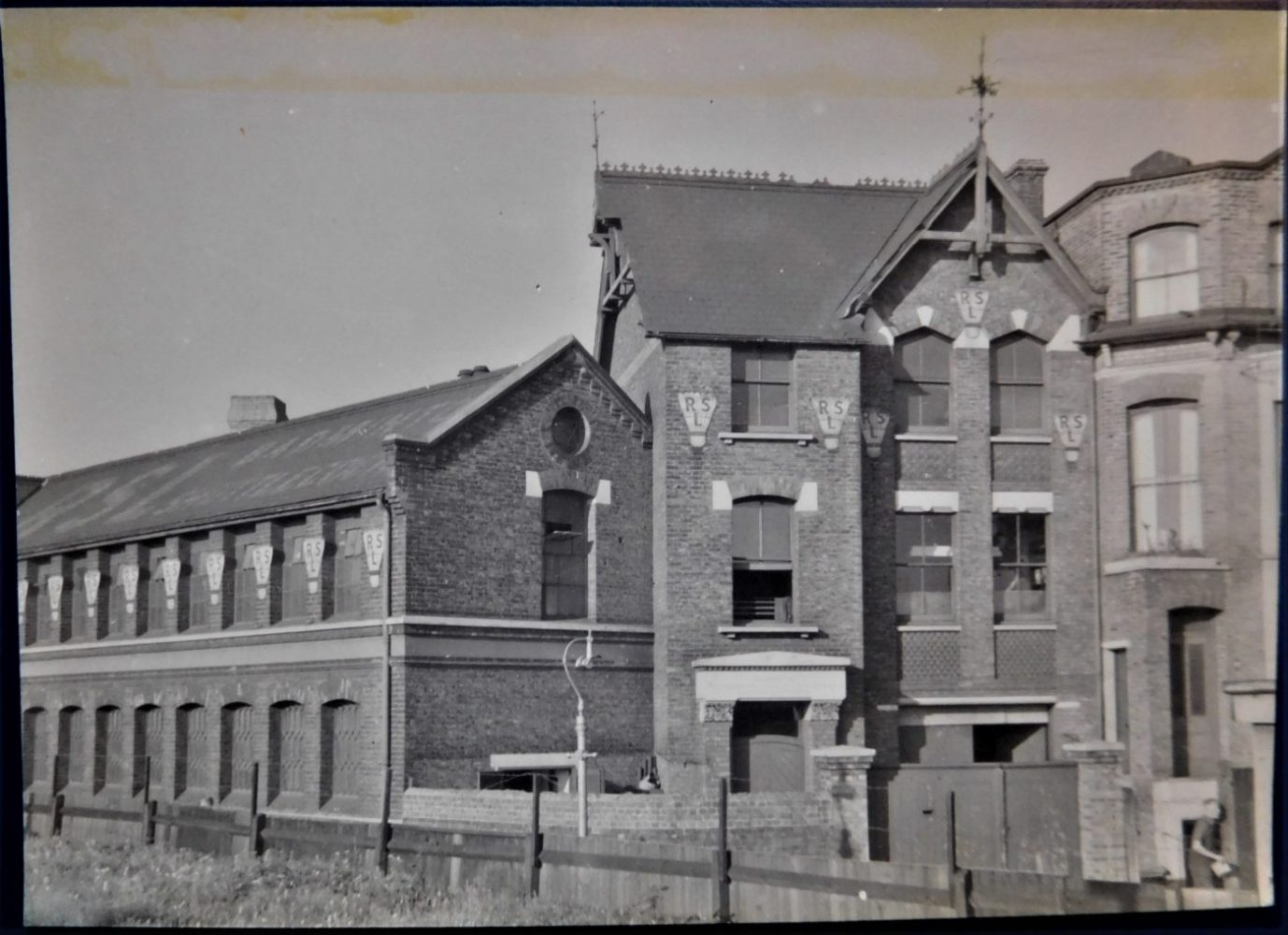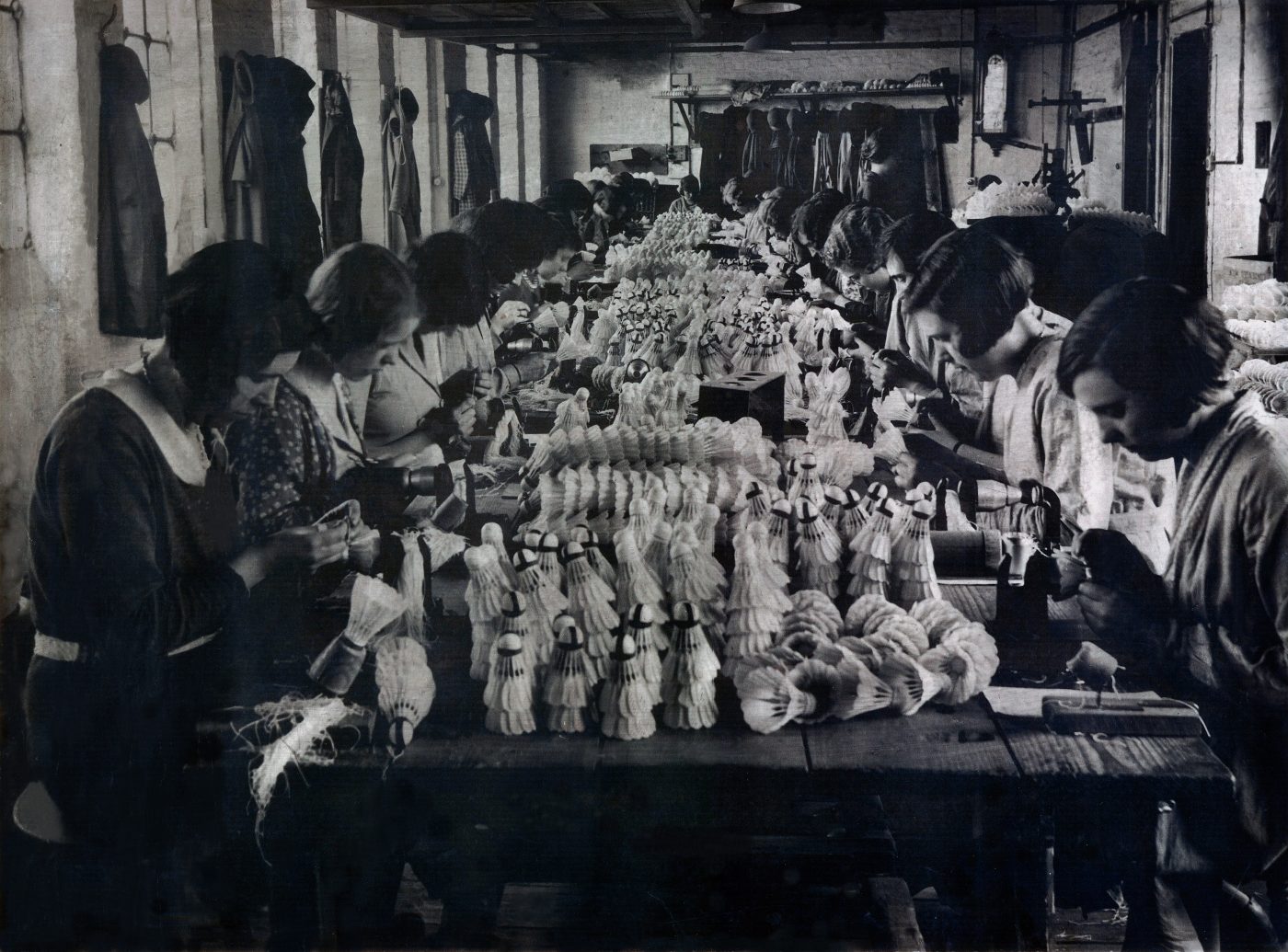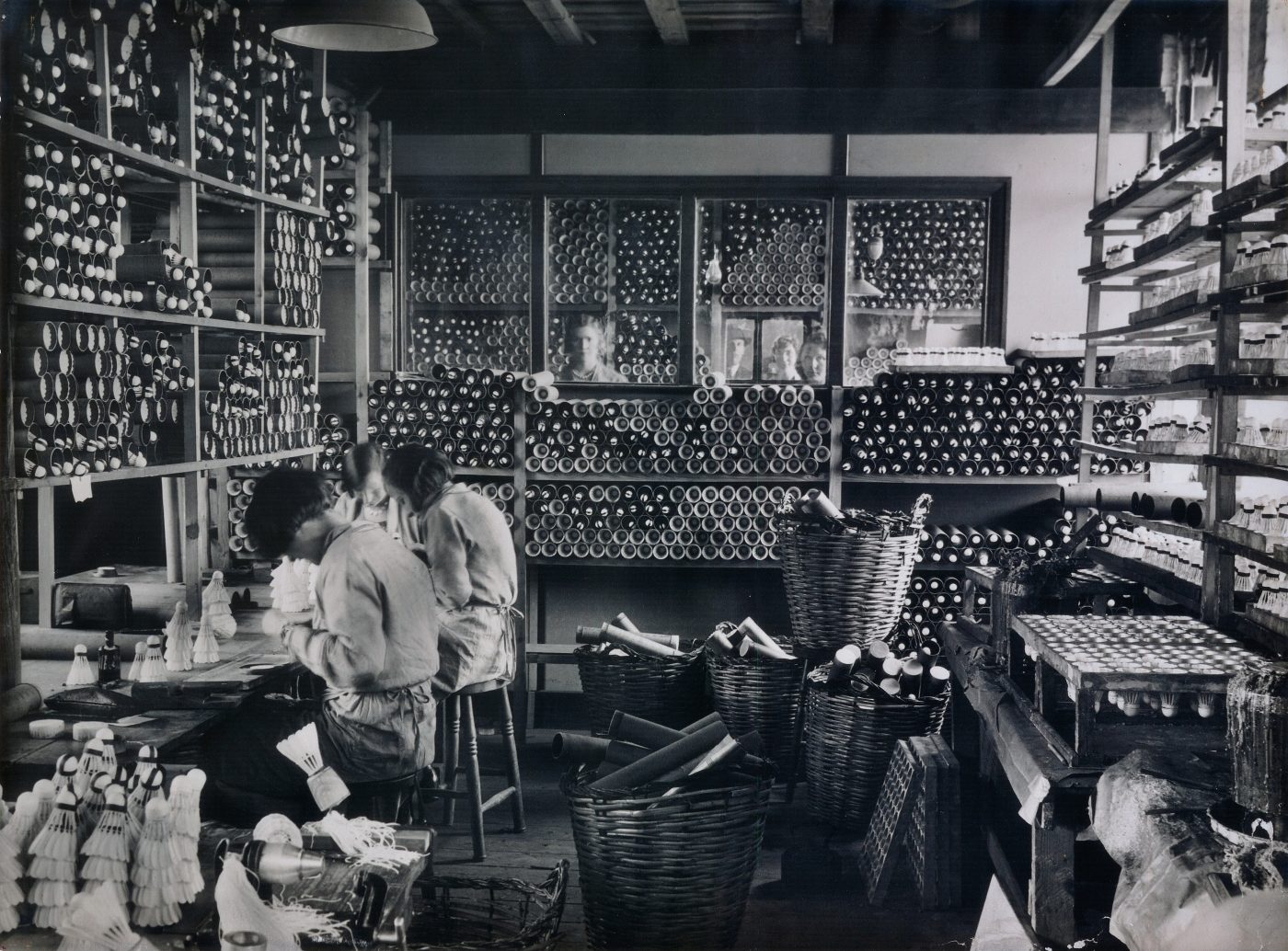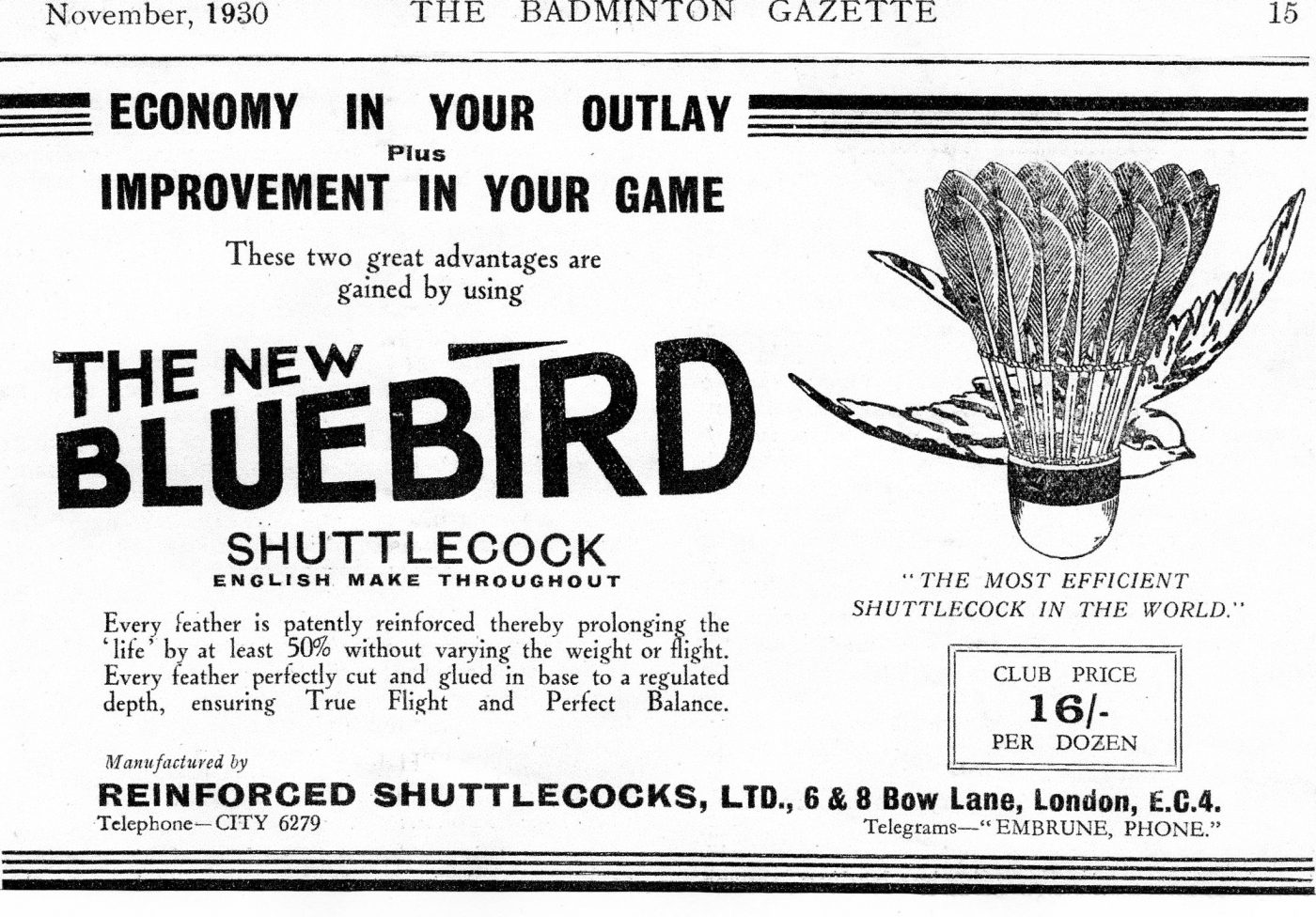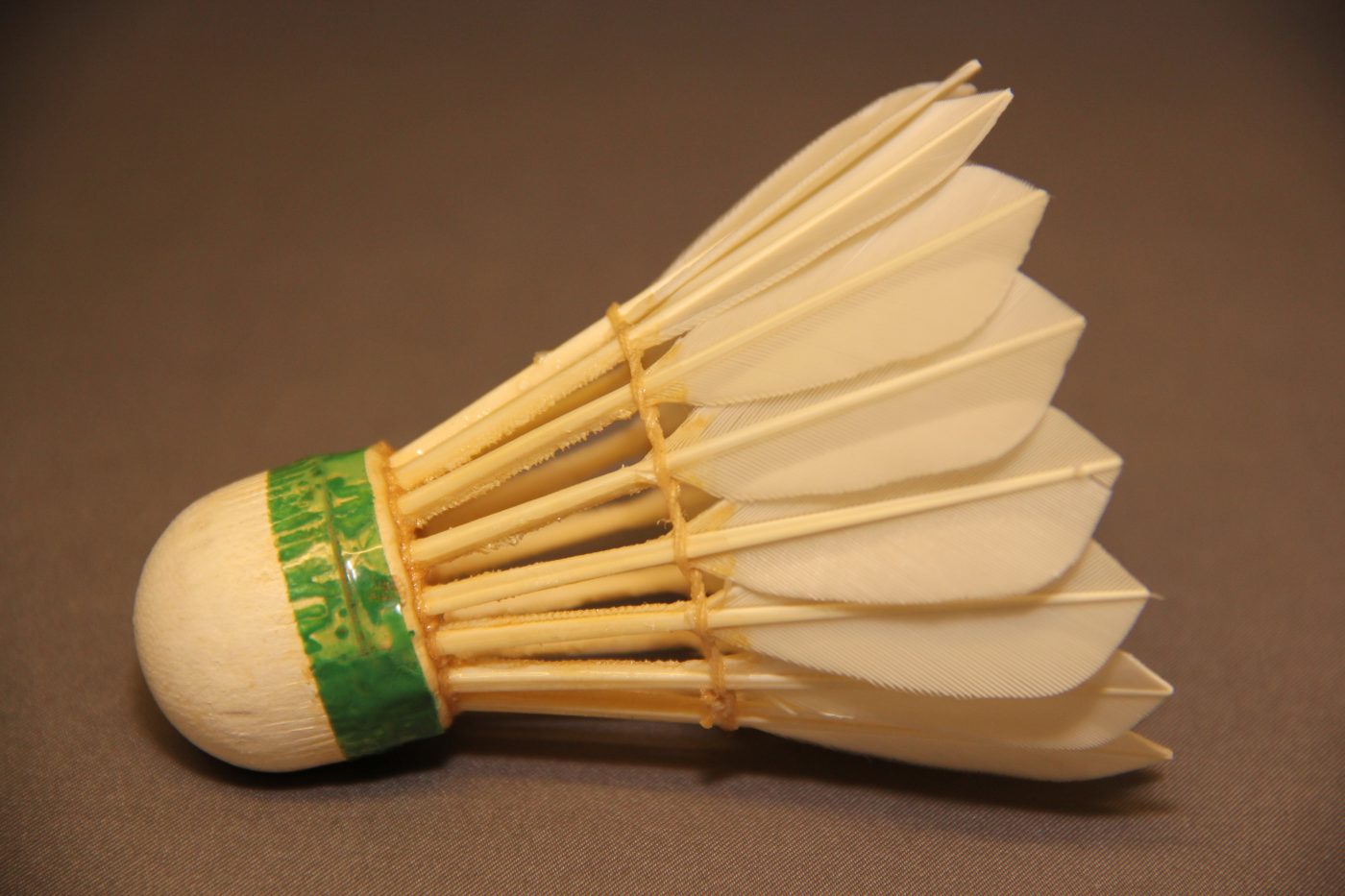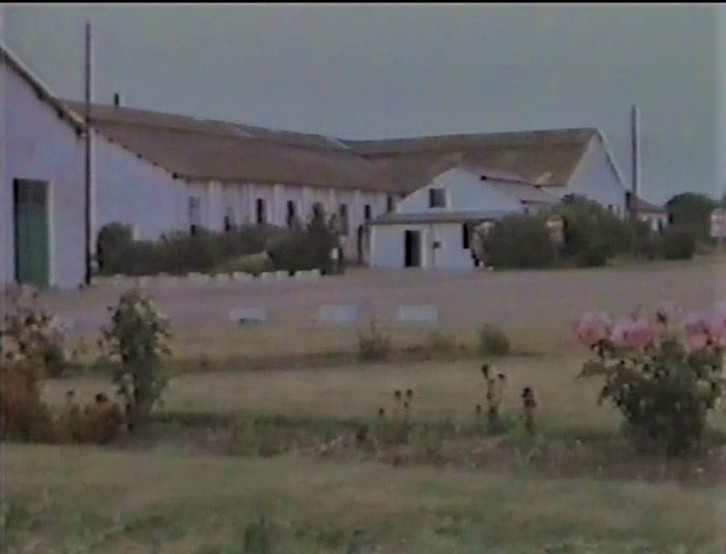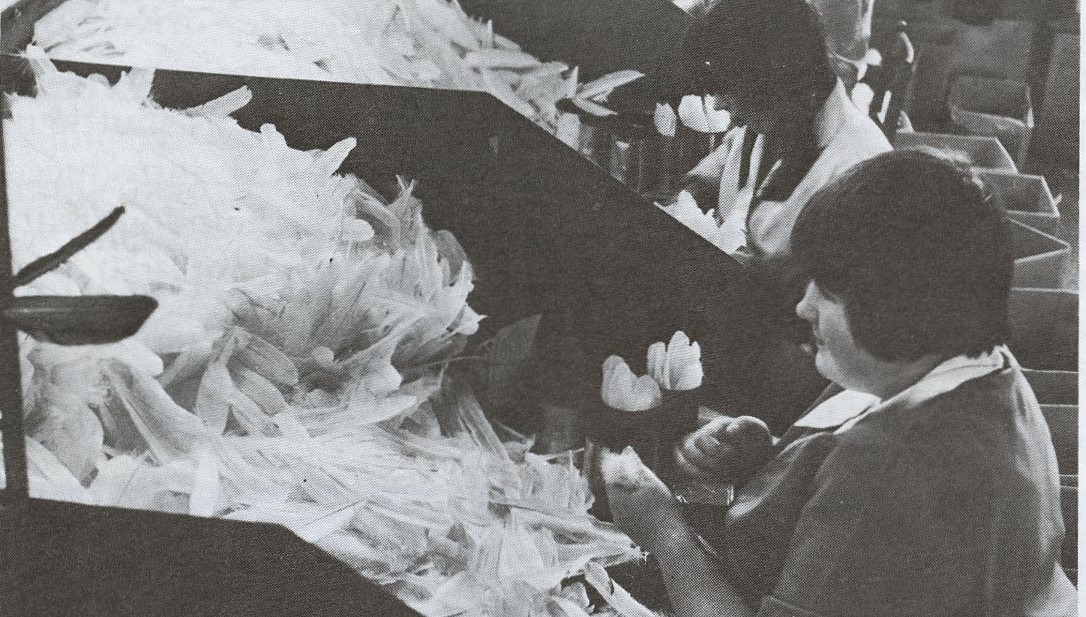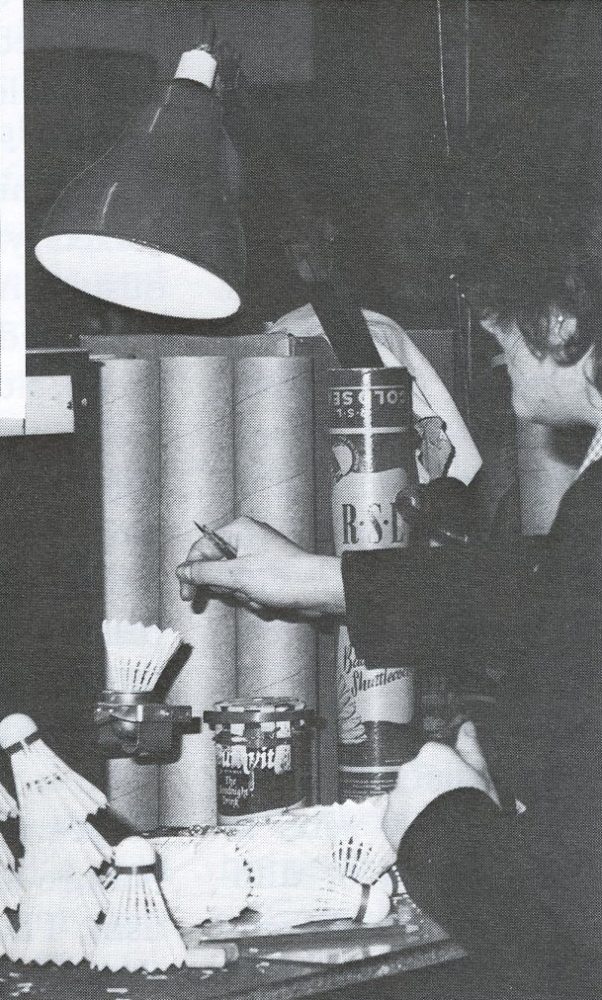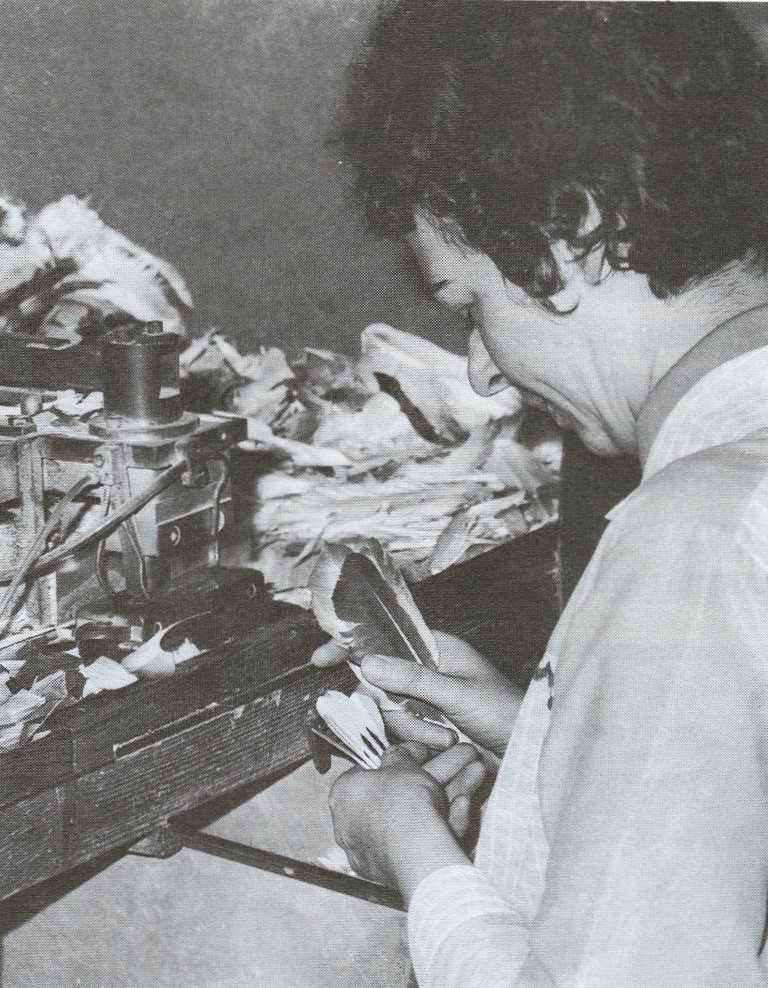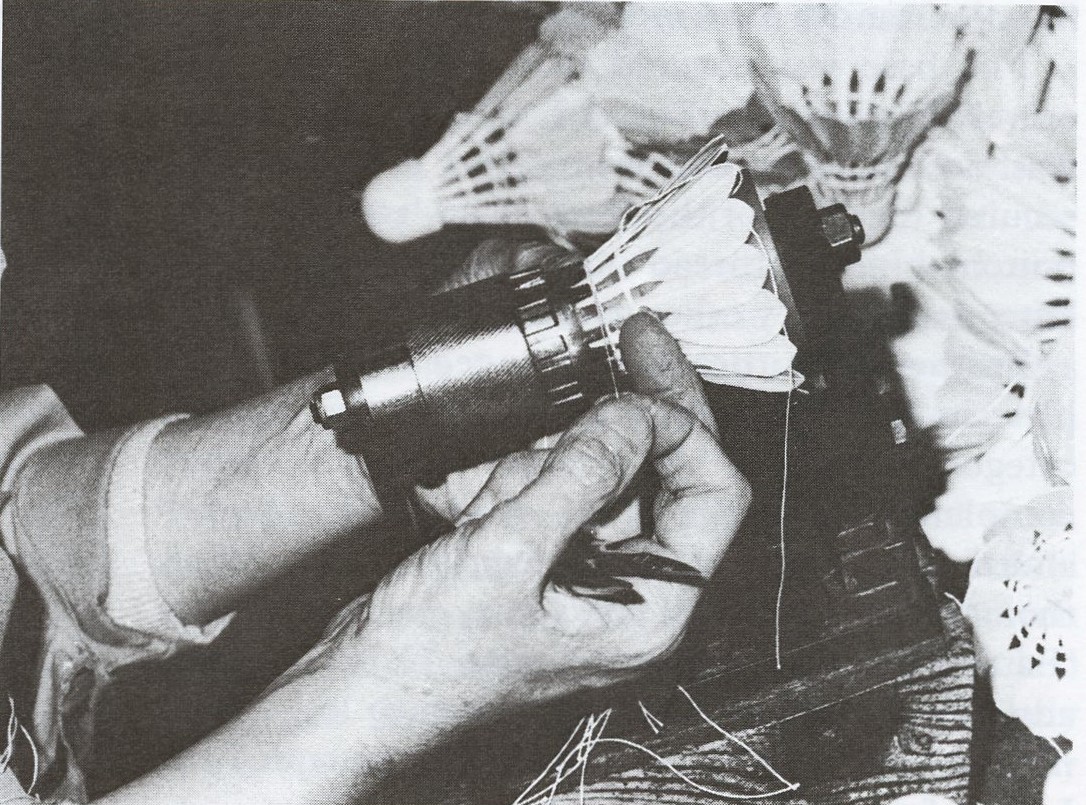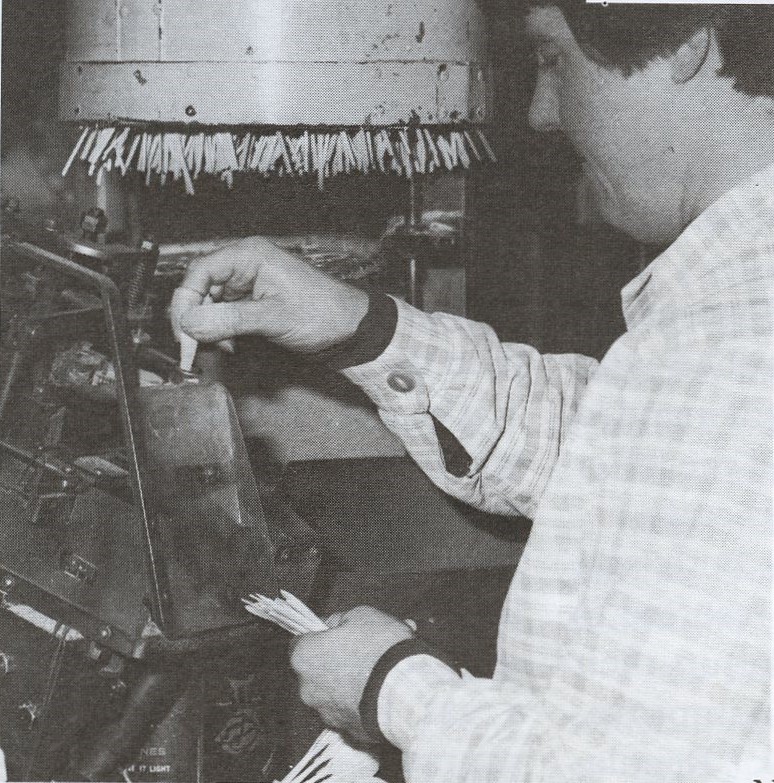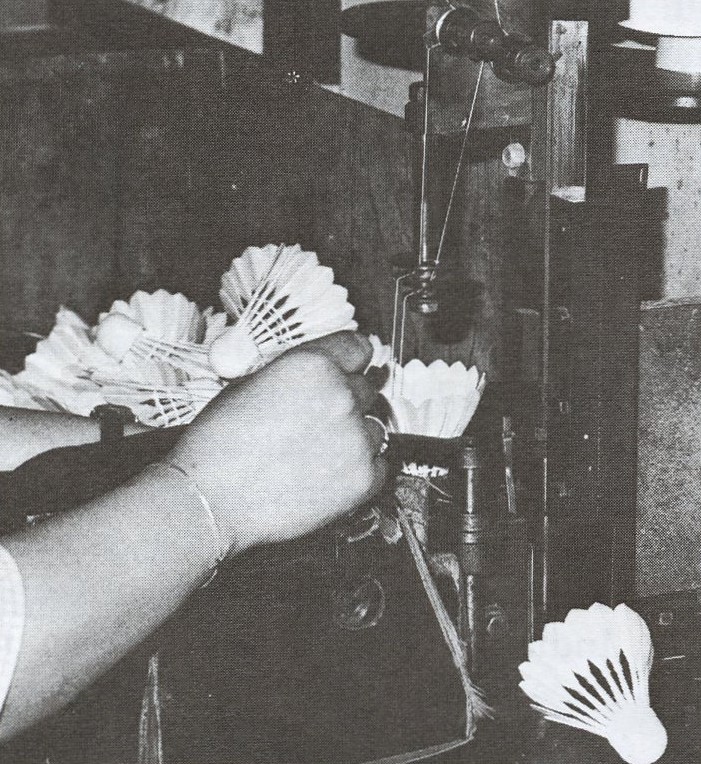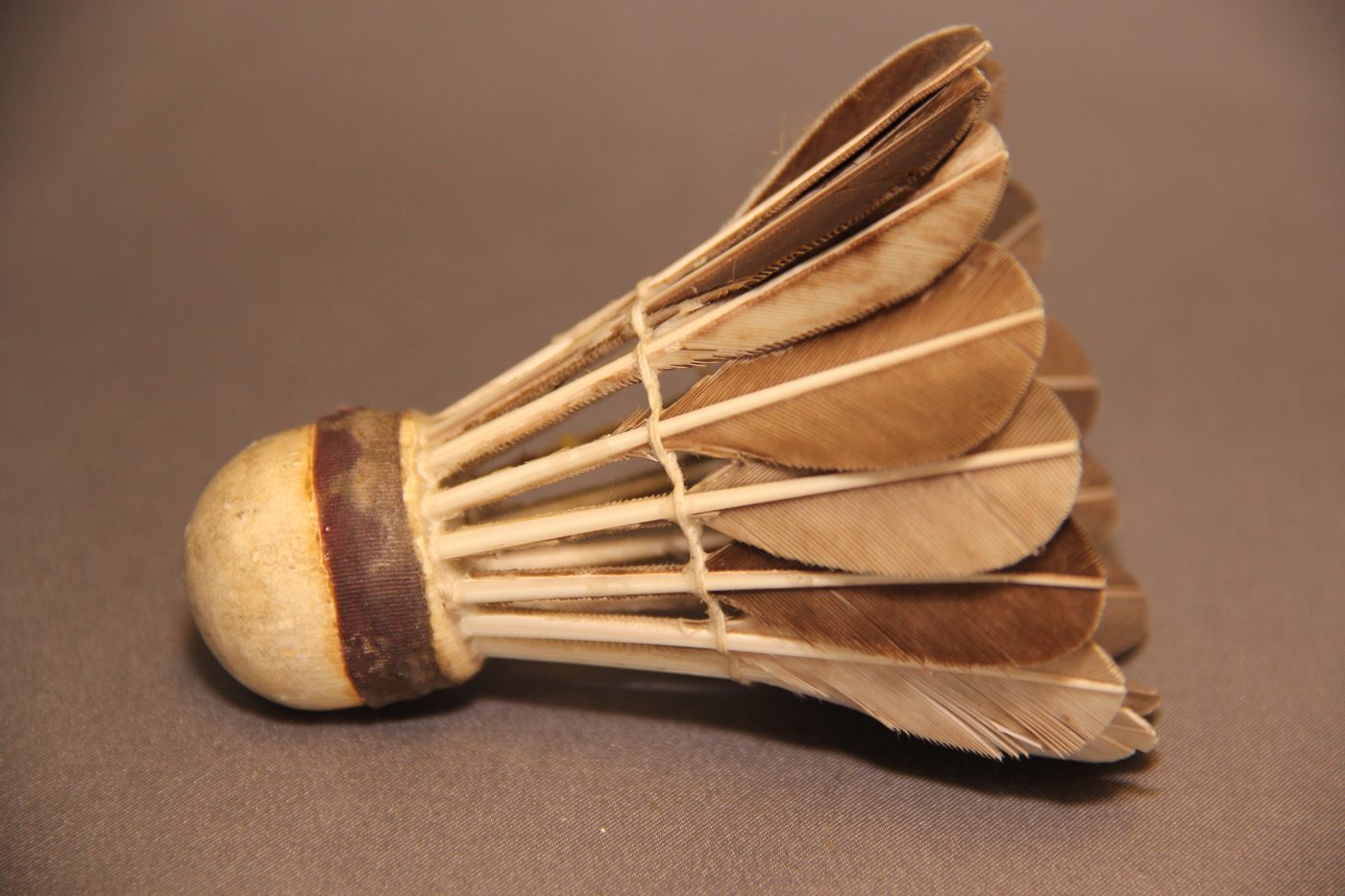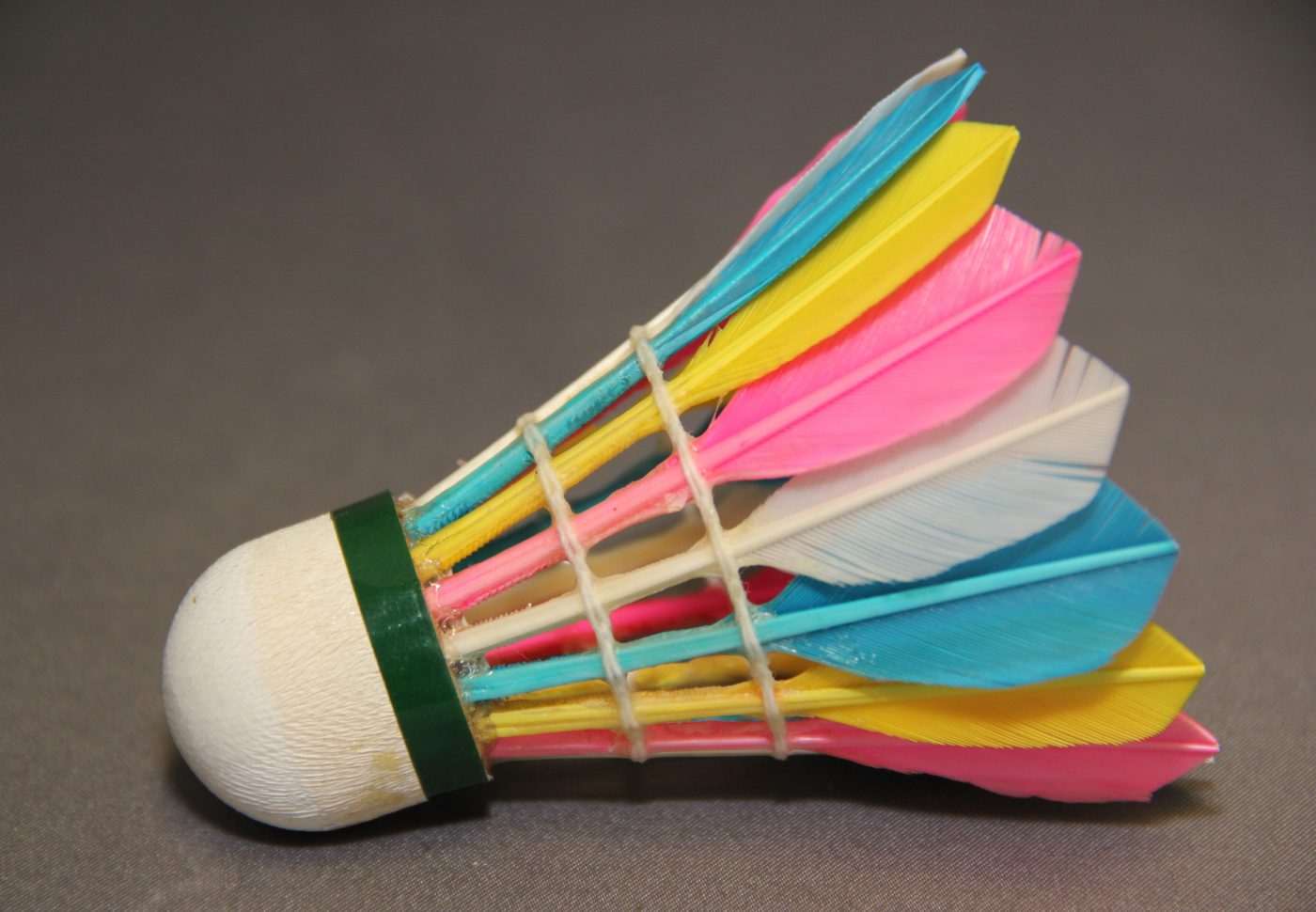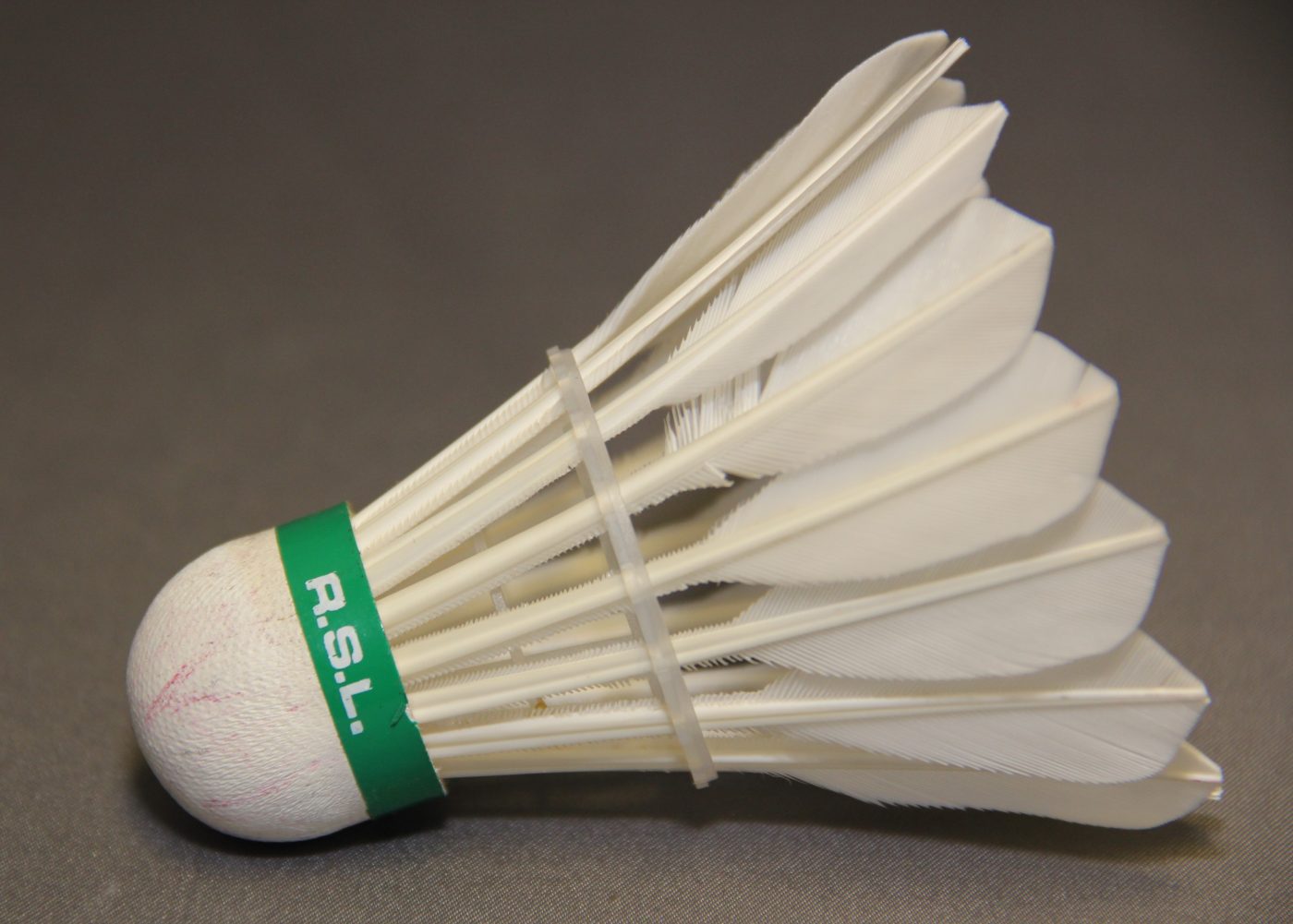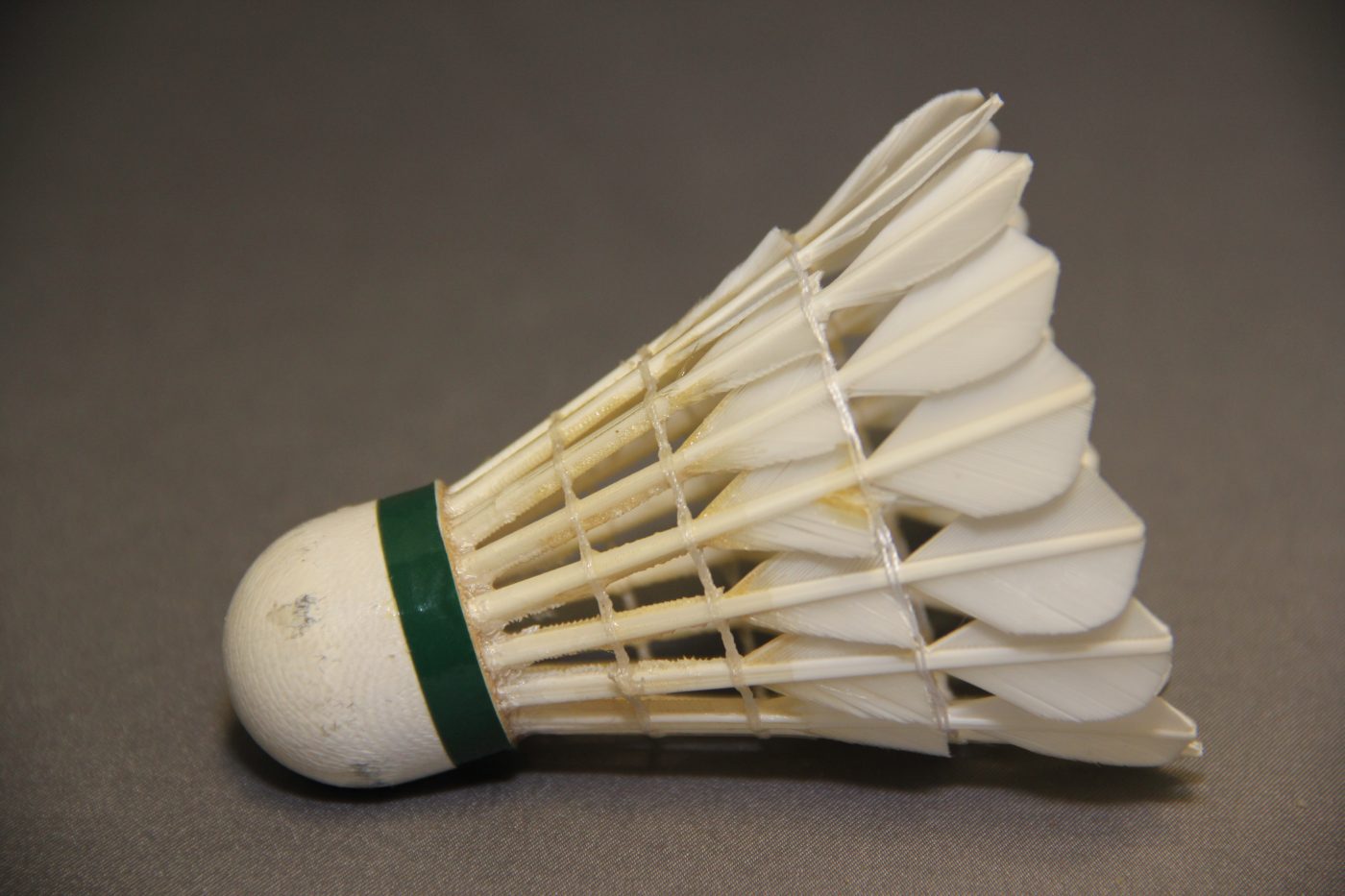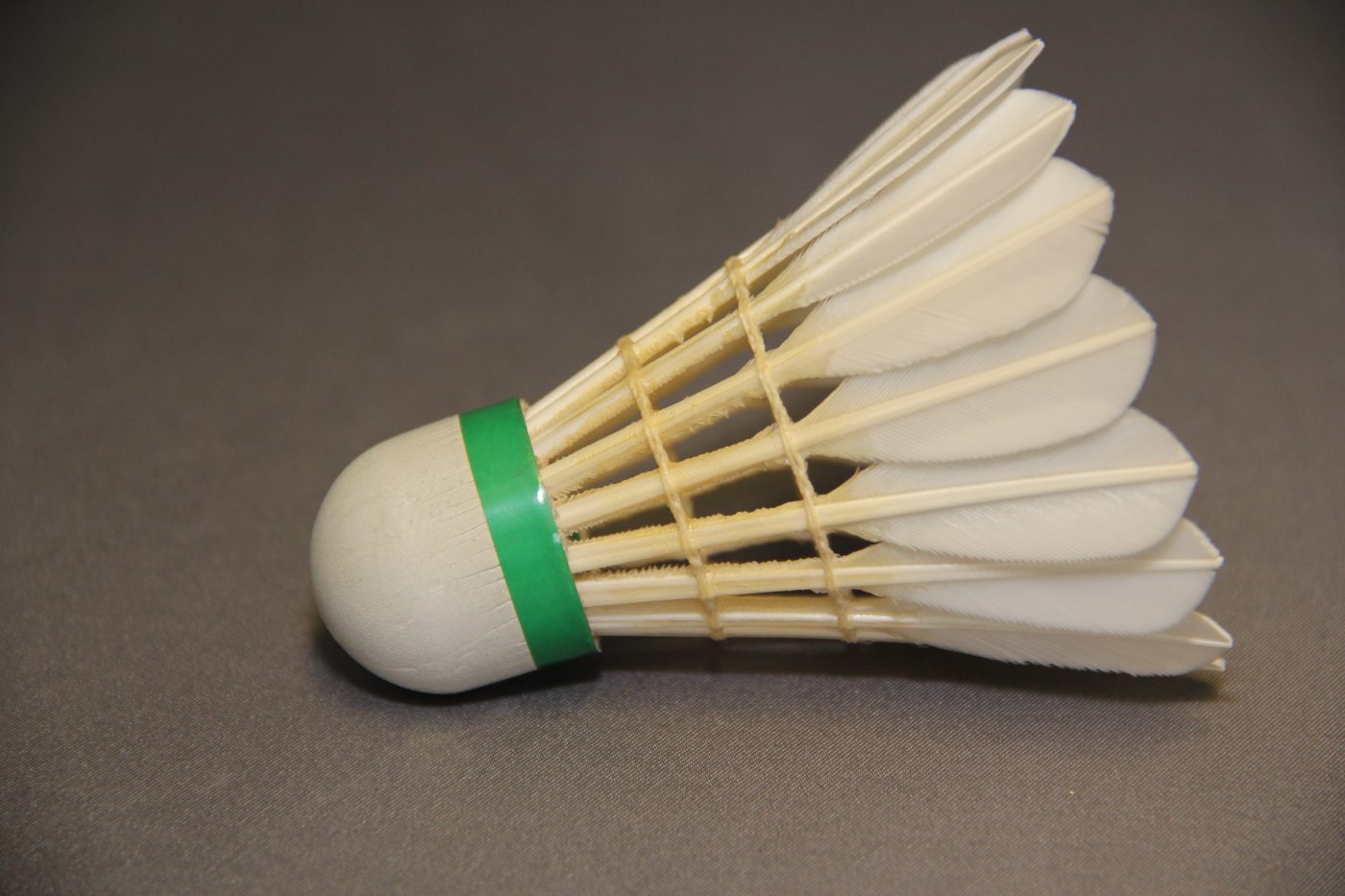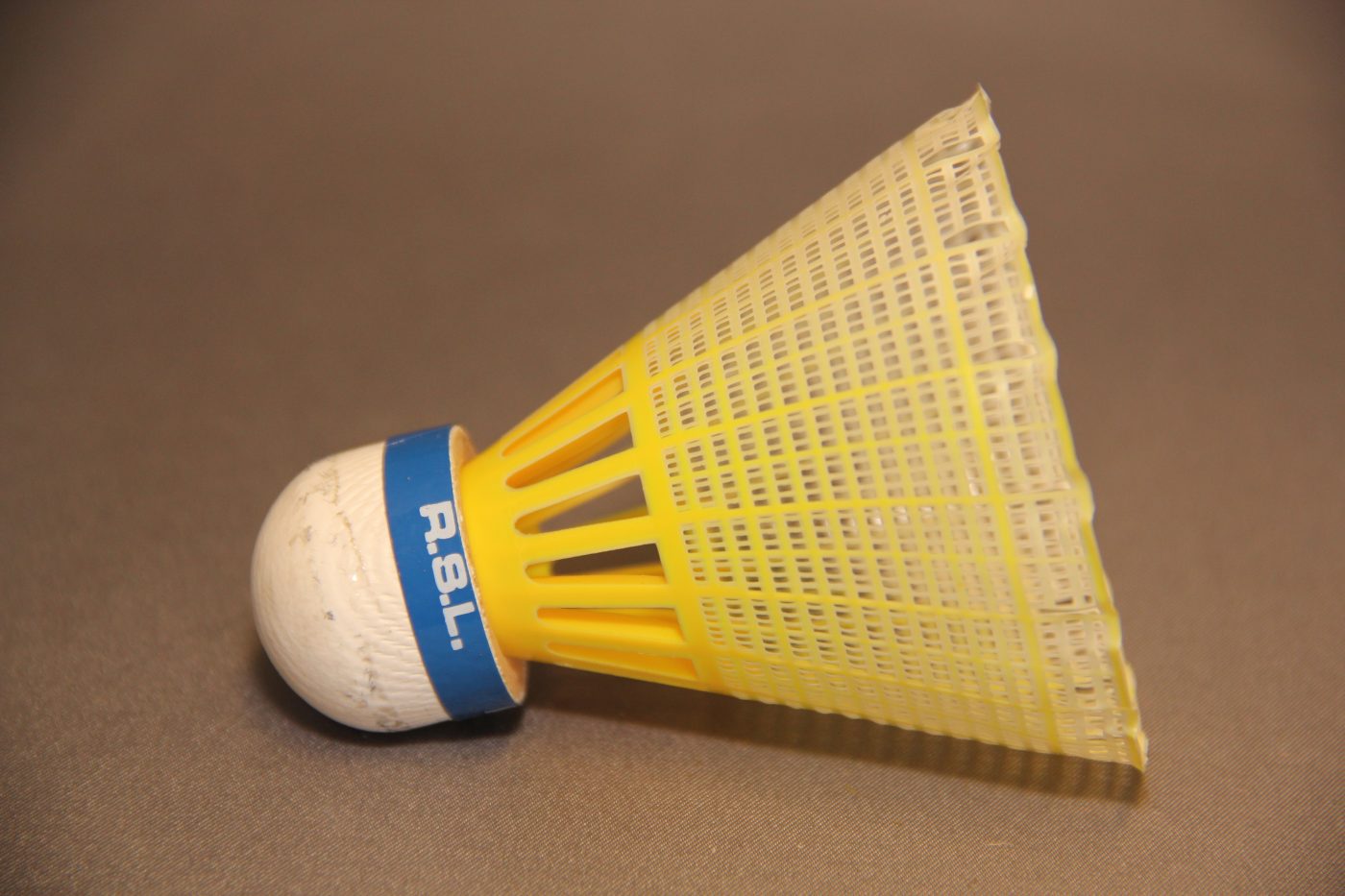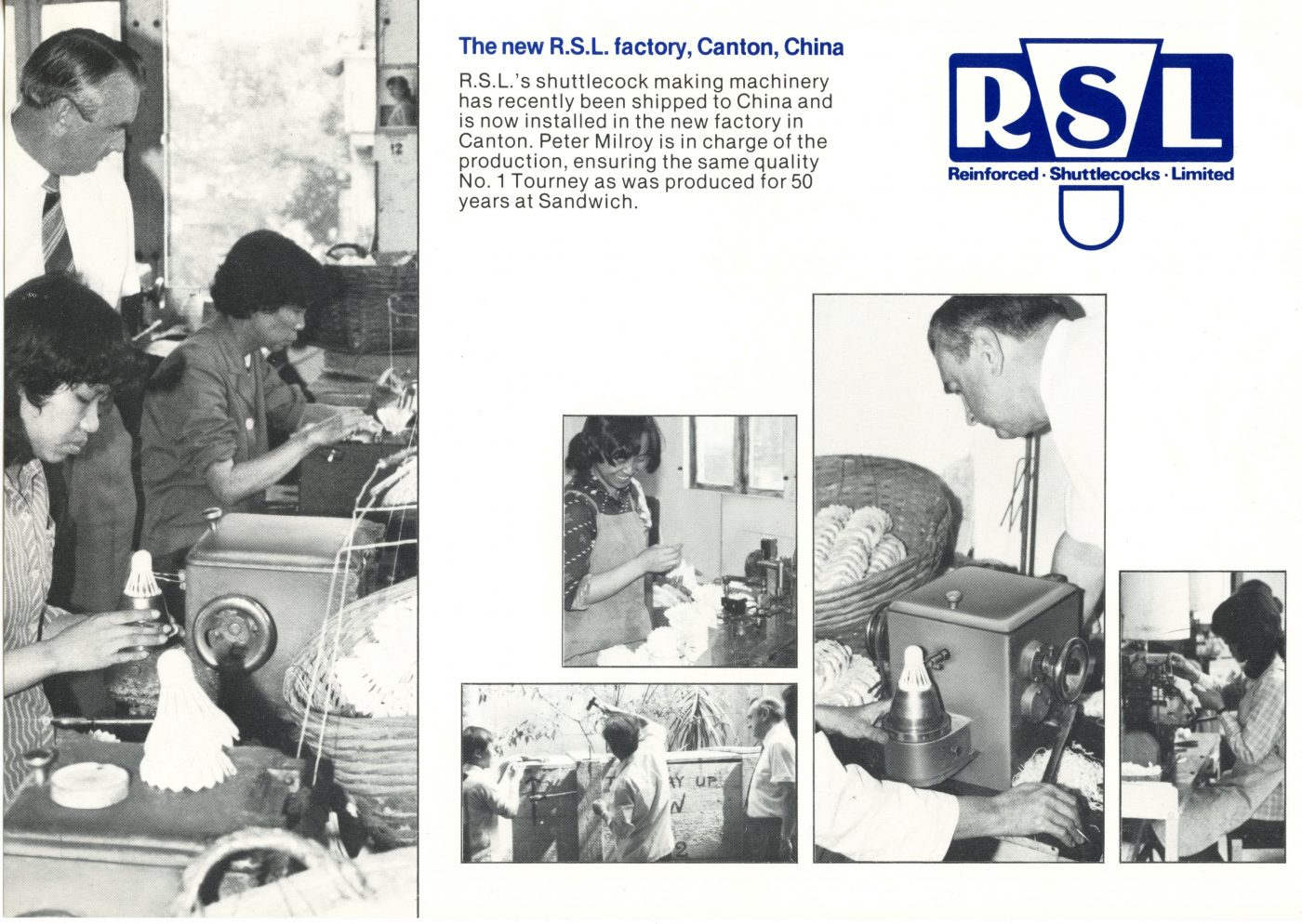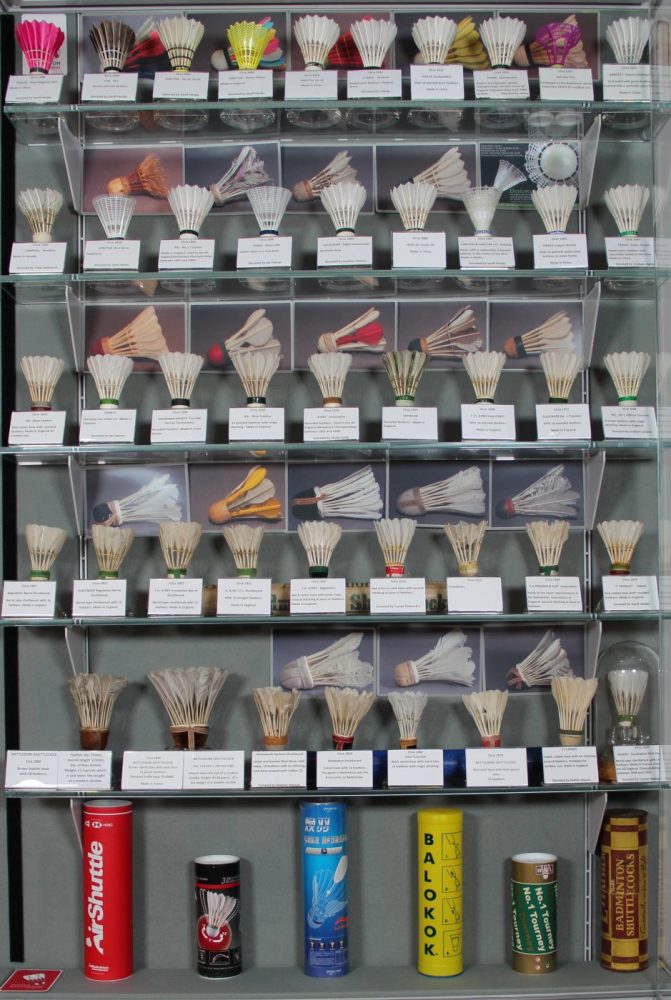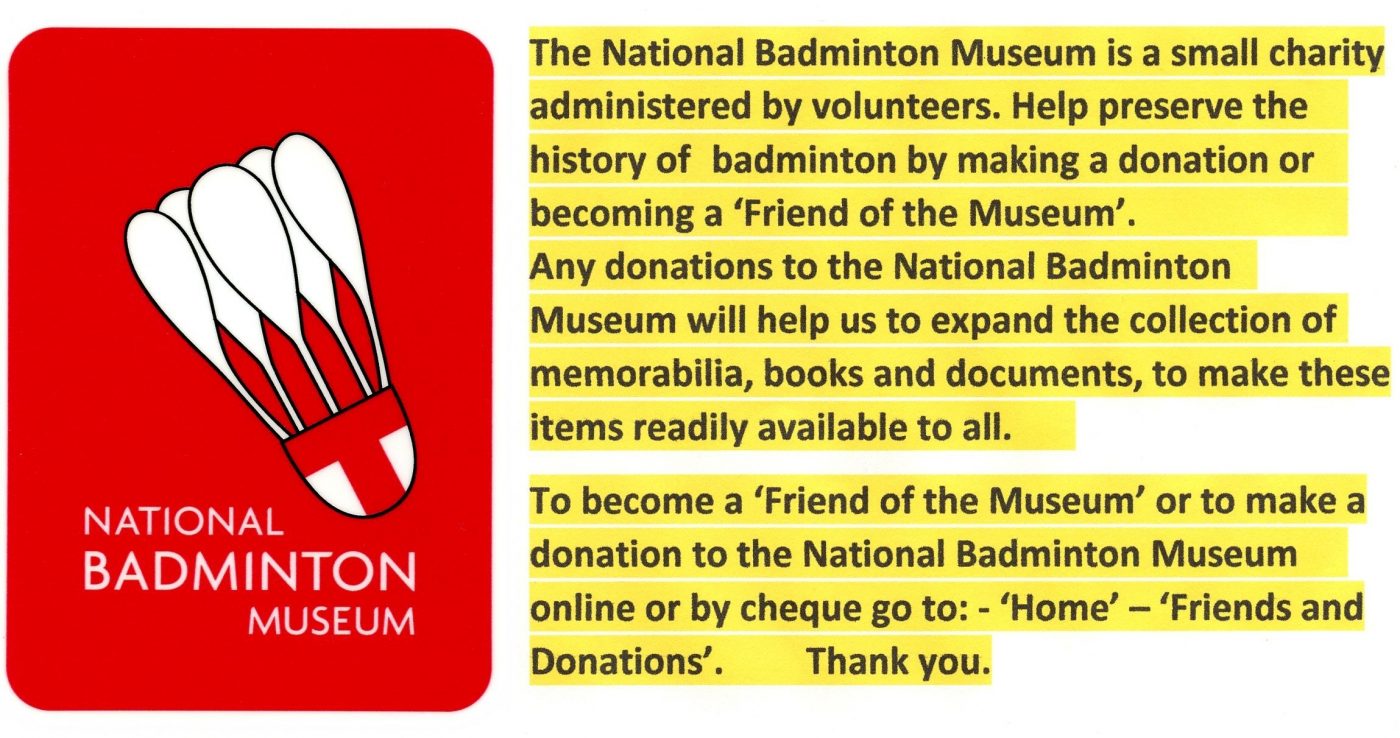The History of Reinforced Shuttlecocks Ltd – RSL
South Norwood, London in the middle part of the 20th century was home to one of the country’s leading sports goods manufacturers. Webber Bros. Ltd. supplied balls for many sports including football, rugby, netball, volleyball, cricket and hockey. In addition, their second business, Reinforced Shuttlecocks Ltd (RSL) designed and manufactured one of the world’s best shuttlecocks at their Stanley Works, South Norwood, London.
In the 1920s Richard Webber became interested in the manufacture of shuttlecocks. He started making shuttles at home, washing the feathers in the bath and drying them with his wife assistance in their kitchen. It is understood that he started his business in 1928, at some point he met Rene Gathier and G.P. Thompson who were importers of gut and string manufacturers. In 1930 the three became directors of a new company Reinforced Shuttlecocks Ltd.
Shuttlecocks were produced by hand in the 1930s at RSL’s South Norwood factory.
Reinforced Shuttlecocks Ltd. RSL took its name from the strengthening or reinforcing of each feather quill from the top of the cork to the stitching with a thin plastic sleeve, which was actually shrunk on the quill thus adding considerable strength. The idea was praiseworthy but did not actually work in practice, RSL’s ‘Bluebird’ shuttlecock did not fly as intended but it was the first of a long line of shuttles.
The first advertisement for the RSL ‘New Bluebird’ shuttlecock appeared in the November 1930 Badminton Gazette. It said “Every feather is patently reinforced thereby prolonging the ‘life’ by at least 50% without varying the weight or flight. Every feather perfectly cut and glued in base to a regulated depth, ensuring True Flight and Perfect Balance.”
One month later in the December 1930 Badminton Gazette, RSL had altered the wording in the advertisement to “Every Quill protected by chemically prepared sleeve, thereby considerably prolonging the actual playing life without in any way vary in the Weight and Flight.”
RSL ‘Regulation’ shuttlecock from the early 1930s. Rounded feathers, second stitching at base of feathers.
From 1934 films of shuttlecocks in flight were studied. It was discovered that to make the perfect shuttlecock the goose feather needed to be from the same wing of the bird, either right or left, but not mix. They also needed to be from the same breed of geese from the same part of the world, as the curve of the feathers differed from region to region. This scientific analysis helped produce the RSL No. 1 Tourney which became the shuttlecock used in major championships around the world.
By 1936 RSL produced 40,000 shuttlecocks per week made from cork bark and goose feathers. In the same year, the company opened the first-ever shuttlecock factory in the USA.
In 1938 the four directors of RSL were Richard Webber, Frank Webber, Rene Gathier. Gathier was a French badminton champion and represented his country at the International Badminton Federation (IBF). L Gathier and Co (LGCL) were based at 2 Bow Lane, central London as were the RSL’s offices. LGCL produced Bow Brand strings for badminton and tennis rackets.
Production in England was closed down during World War II, but continued in their Pennsylvania, USA factory.
RSL Move Production to Sandwich, Kent
In April 1947 RSL opened a factory at Haigh Camp, Richborough, Kent creating 150 jobs for the Sandwich area. Work progressed on shuttlecock design accompanied by improved production machinery. When the All-England Championships commenced again after the Second World War in 1947, RSL No 1 Tourney shuttlecocks were chosen for the All-England Championships and use right through to 1983.
Film – Shuttlecocks being manufactured in the 1970s at the RSL factory in Sandwich, Kent.
Circa 1947, RSL made these in Sandwich, using speckled and dark feathers, when after the war white feathers were in short supply, only suitable for halls with white walls.
Circa 1978. RSL ‘Practice’
Circa 1988. RSL ‘Dura-Tourney’. The goose feathers were fixed into a nylon cage that held them firmly. If one or two feathers broke during play they were easily replaced using good feathers from other used shuttles. The base was a two-part construction – natural cork was bonded onto a thermo plastic bowl.
Circa 1963. Experimental shuttlecocks made at Sandwich by RSL. Feathers were punched in a different configuration to give a more stable flight and added durability with a 3rd line of stitching at the top. It flew well but did not last.
Circa 1980. RSL ‘No. 1 Tourney’ shuttlecock made at the factory in Sandwich, Kent.
Used in the All-England Championships from 1947 to 1983.
Circa 1990. RSL ‘550’. Cork base fluorescent synthetic.
Photos: – Geoff Hinder
Click on images to enlarge
RSL Move Production to China
In order to guarantee the supply of top-quality goose feathers which were only available in China, RSL in 1980 entered into an arrangement with the Chinese Government whereby they set up a factory in Canton, China with the Chinese providing the raw materials and RSL the experience and machinery which had been perfected over the years.
The UK RSL company went into administrative receivership in 1991 but the name and production continue. The brand was purchased by a Hong Kong family business Double Happiness Ltd., Founded in 1978 by Douglas Chau, the father of the current CEO Duncan Chau. Now 66 million RSL shuttles are produced each year along with other sports equipment at 20 sites in China, the company has 1,300 employees worldwide.
————————————————
The National Badminton Museum is grateful to Stuart Hibberd from Upper Norwood for all his research into RSL.
————————————————–
Some of these shuttlecocks and many more can be seen at the National Badminton Museum, National Badminton Centre, Bradwell Road, Loughton Lodge, MILTON KEYNES MK8 9LA.
Visitors are welcome to look around the Museum unescorted at any time – the National Badminton Centre is normally open 9am to 8pm every day.
———————————————
National Badminton Centre
Lodge Hotel
For more information and to book a room go to: – Badminton England website – https://www.badmintonengland.co.uk – National Badminton Centre – National Badminton Centre Hotel.
———————————————-
